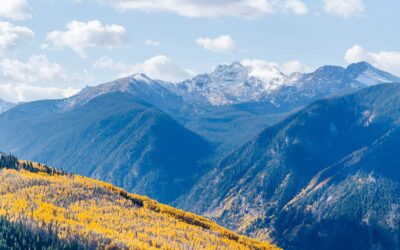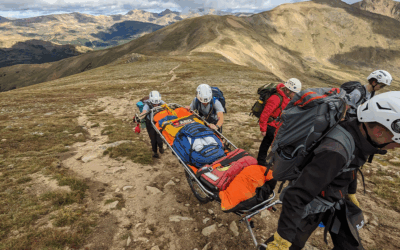By Lauren Hendricks
This piece is an excerpt from our April 2021 edition of Passages. If you are interested in reading more, the April Passages is currently available to members and will become available for non-members in August.
Movement is an essential part of life for wildlife species that live along the Continental Divide Trail. Animals, birds, and insects travel between different patches of habitat throughout the year to access resources which are unevenly distributed across landscapes and seasons. These seasonal movements are known as migrations.
Migrations can be measured in feet to hundreds of miles, and distance covered is often unrelated to creature size. The boreal toad (Bufo boreas)—which can live at elevations of up to 11,500 feet—may travel only a few miles total throughout its lifetime as it migrates between summer breeding grounds and winter hibernation areas. Pronghorn (Antilocapra americana) migrate nearly 200 miles each way between their winter and summer ranges, crossing over the Continental Divide twice every year. The tiny Calliope Hummingbird (Selasphorus calliope) spends its summers high in the Rocky Mountains and its winters in Mexico, covering over 5,000 miles annually.
For all species, the ability to access and travel safely between different habitats is crucial to successful completion of their life cycles. As human development and resource extraction continues and habitat is fragmented, this becomes more and more challenging for wildlife. Reestablishing and protecting connection between areas of high quality habitat and along migration routes–known as habitat connectivity–is an important part of conservation efforts for many species that live along the Divide.
One strategy that has been implemented in a variety of locations is the creation of wildlife corridors. Ideally, wildlife corridors are strips of habitat free from human development that provide connectivity between patches of high quality habitat or seasonal ranges. Wildlife corridors are often—but not always—forest or shrubland within a greater landscape that has been cleared for agriculture, residential development, energy generation, and myriad other uses. Protecting the land on either side of waterways, creating riparian corridors, has the dual benefit of protecting habitat for both terrestrial and aquatic species. And corridors can themselves be important habitats, as some species may live permanently within the area that other species pass through on their seasonal migrations. Corridor width is dependent on the species that they are designed for, as some species are very sensitive to human disturbance and require a large buffer.
Wildlife corridors are particularly useful for species that must travel long distances through highly fragmented landscapes. However, few of these corridors are continuous. Crossings, whether of roads or fences, are literal barriers to connectivity. For species such as elk and mule deer, fences can be modified to allow safe passage while still containing cattle. (After all, it’s hard to “shut the gate” when you don’t have opposable thumbs.) Wildlife under- and overpasses are also being constructed throughout the West to enable safer crossing of major highways for many species. Under- and overpasses have the added benefit of protecting humans traveling along those roads, who could be injured in a collision with a large animal crossing the road.
Long trails such as the Continental Divide Trail have the potential to provide habitat connectivity for species that live in these landscapes. Recent research shows that much of the CDT traverses land that is still both wild and highly connected, making it a valuable resource for species traveling between large protected areas. Continuing to work to complete and protect the CDT for human users will likely have positive long-term benefits for wildlife species who may use it as a corridor as they carry out the activities necessary for survival.
Check out these additional readings and resources for more information on this topic:
Reimagining the American West to Reach Half-Earth
U.S. Fish and Wildlife: Wildlife Corridors
Society for Conservation Biology: The Last Mile: How to Sustain Long Distance Migration in Mammals
Pew: Wildlife Migration Corridors in the Western U.S. Need Identification, Conservation
Pew: How Wildlife Corridors Protect Animals and People
Wildlife Crossings Can Protect Migrating Animals
Rocky Mountain Elk Foundation: Mending Fences — Wildlife Friendly Fencing
Lauren Hendricks is CDTC’s GIS Program Manager. She will never cease to be amazed by the power of maps and imagery to reveal patterns in the natural world, and takes every opportunity she can get to explore them in person.
Cover photo by Matt Berger



